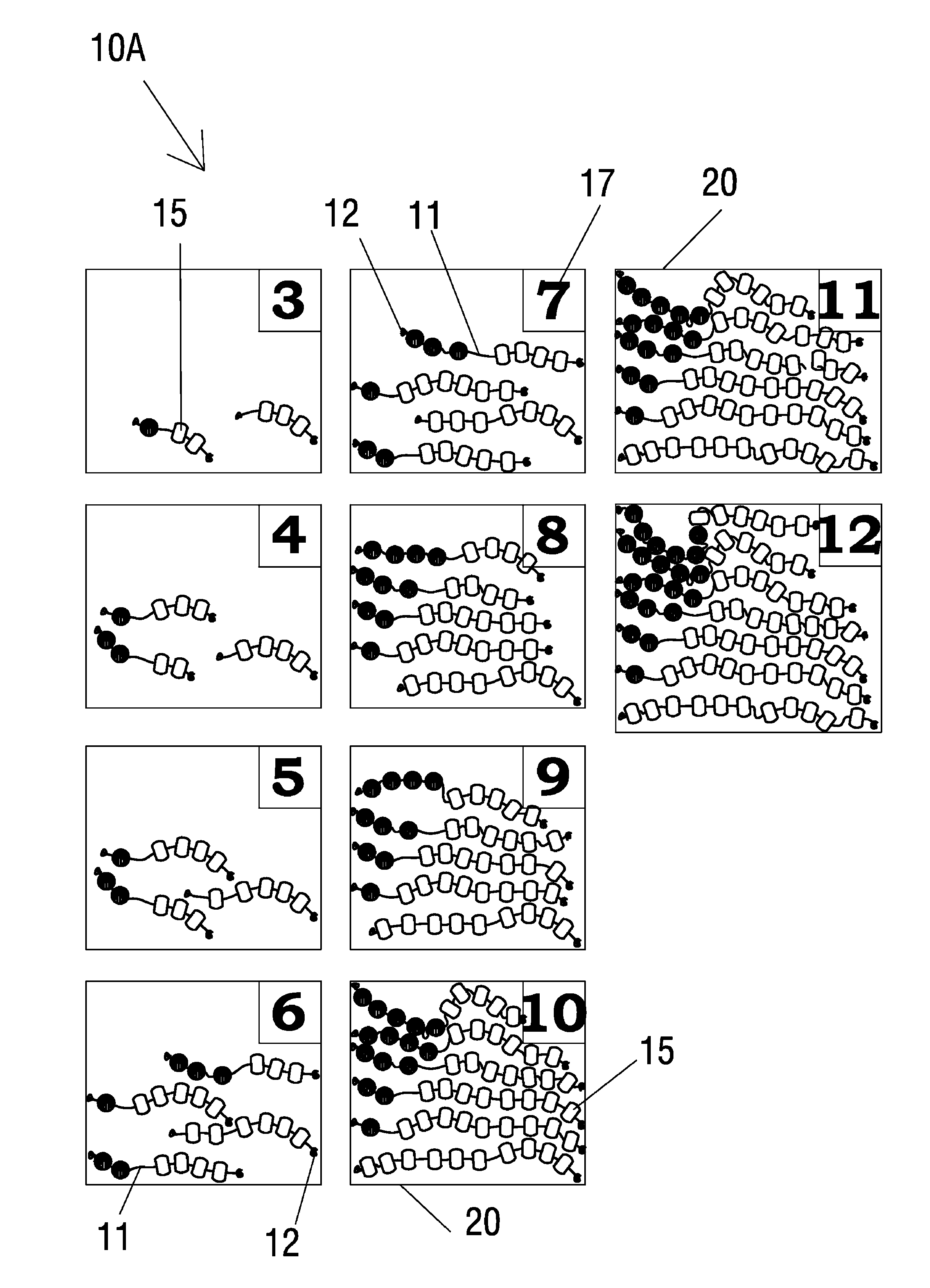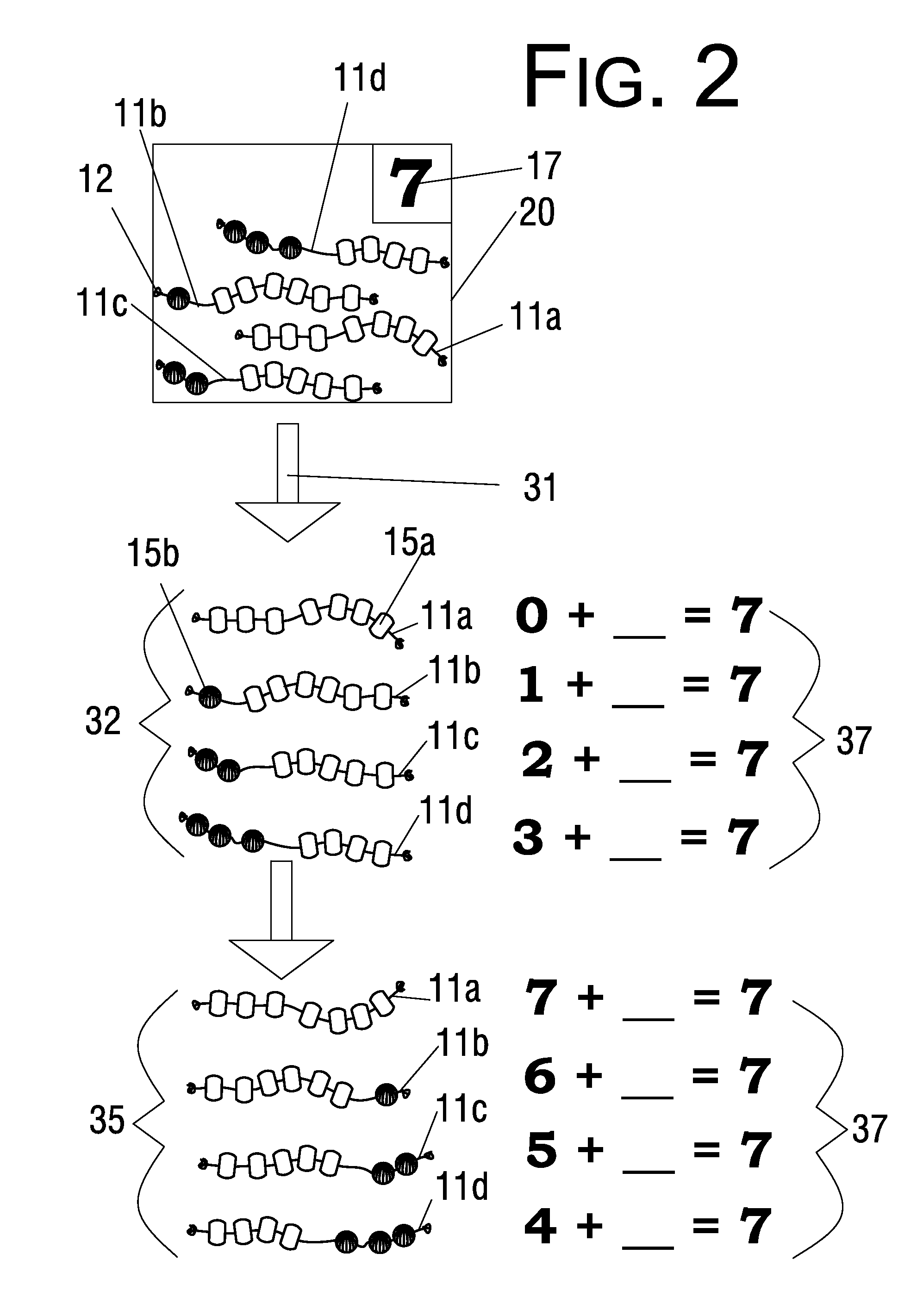String math manipulative system and method
a manipulative system and math technology, applied in the field of math teaching system and method, can solve the problems of consuming a large amount of teaching and re-teaching time, affecting the learning progress of students, and affecting the learning of basic math facts, so as to achieve the effect of convenient us
- Summary
- Abstract
- Description
- Claims
- Application Information
AI Technical Summary
Benefits of technology
Problems solved by technology
Method used
Image
Examples
first embodiment
[0059]The strings 11a, 11b, 11c, 11d (FIG. 2) are then put 32 (FIG. 3) in order from the string having no second-variation holed objects 15b (string 11a) to the string having the most second-variation holed objects 15b (string 11d). For tactile practice in the addition facts that add up to seven, the student may separate 33 the objects between the two variations, pulling the variations to different ends of the string. The student may move holed objects 15 along string 11 to physically mirror the math operation—either with eyes open, or if, as illustrated in the first embodiment, the holed objects of the first variation are configured with a first shape and the holed objects of the second variation are configured with a second shape, even with the eyes closed. Further the student may hold the first-variation holed objects 15a in one hand and the second-variation holed objects 15b in the other hand. Also, the student may demonstrate 34 and verbalize to him or her self, or to others, t...
third embodiment
[0107]FIG. 17 illustrates an additional variety in shapes of holed objects 15, in which the holed objects are provided in shapes that might be familiar or interesting to children, as opposed to limiting the invention to merely geometric shapes. These include, but are not limited to, such shapes as the following: animals, bugs, sea creatures, people, holiday shapes (for example, shamrocks, Christmas trees, snowflakes, jack-o-lanterns, Easter eggs, hearts, etc.), sports shapes, beads with smiley faces, or the like.
[0108]Both the second and third embodiment also illustrate that the string math manipulative need not be placed in container 20. For example, students can manually construct one or more sets of addition 10-A, subtraction 10-A, skip counting 10-SC, multiplication 10-M, or division 10-A sets themselves, by threading holed objects 15 onto strings 11. At first a model is preferably provided for the students to copy, but after sufficient practice, the students will be able to con...
PUM
 Login to View More
Login to View More Abstract
Description
Claims
Application Information
 Login to View More
Login to View More - R&D
- Intellectual Property
- Life Sciences
- Materials
- Tech Scout
- Unparalleled Data Quality
- Higher Quality Content
- 60% Fewer Hallucinations
Browse by: Latest US Patents, China's latest patents, Technical Efficacy Thesaurus, Application Domain, Technology Topic, Popular Technical Reports.
© 2025 PatSnap. All rights reserved.Legal|Privacy policy|Modern Slavery Act Transparency Statement|Sitemap|About US| Contact US: help@patsnap.com



